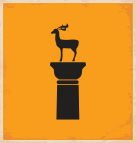
MARASIA

In 1522 Rhodes was conquered by the Ottomans, and was changed into a mere administrative center of the Ottoman Empire. Upon the departure of the Knights, a large number of European, Greek and Jewish residents flew to Crete and to the West. At the same time, Turkish population flowed from Asia.
The most determinant measure for the formulation of the new conditions of life and the city for the next four hundred years (1522 — 1912) would be the depopulation of the Greeks from the “Castle”, the fortified city, which was now inhabited by the Ottomans, and exceptionally by the Jews who remained in the Jewish district. The “Castle” was the center of financial activity. The Greeks would only enter in order to conduct transactions, and they were not allowed to stay within the walls for the night.
Eight new residential cores were created out of the “Castle”, to serve the needs of the Greek population: on the south-east, the “marasia” of the Metropolis, Saint Anastasia, Saint Nicholas, Agioi Anargyroi (Holy Unmercenaries), Saint John, Upper Saint George and Lower Saint George, and on the north-west, Neochorio.
Marasia were developed in a linear outline. Except for Niochori, two basic axes, vertical to one another, would intertwine the urban web of the neighborhood. The main axis would pass in front of the church, and currently bears the name of the marasi, Agiou Ioannou street, Agion Anargyron street, Agias Anastasias street, Mitropoleos street, Agiou Georgiou street, Agiou Nikolaou street. Public buildings involved churches and schools, which were built and began operating after mid-18th century, when the Ottomans gave a relevant permission.
The marasia had narrow alleys, without open spaces, houses built in the street front, protected by high yard walls, with strict volumes, and simple neo-classical elements on the pillar and the openings of the house. The public fountains were unique architectural elements of the commonly-used space. The largest part of the initial urban web of the marasia is preserved today.
In 1854, the “Castle” hosted 5,500 Ottomans and 1,000 Jews. 500 Ottomans stayed at the suburbs or in the inland of the island. 5,000 Greeks resided in the marasia, scattered in 47 villages. The Francs, around 120 individuals, resided in the suburb of Niochori. This area was inhabited by the consuls of the main nations in Europe.
CHURCHES OF MARASIA
There are no data from written sources or from remains for the churches of the first years of the Ottoman period outside the walls. The only Byzantine churches that have been preserved until this day are Saint John Chostos, in the marasi of Lower Saint George, and Taxiarchis in Niochori.
The Marasia of Rhodes have homonymous churches: Agioi Anargyroi, Saint John, Saint Anastasia, Metropolis, Upper Saint George, Lower Saint George or “Burnt”, and Saint Nicholas. In the new Marasi or Niochori the “Presentation of Virgin Mary” was built. Initially, those churches were small and humble buildings. In the 18th century AD, with the permission of the Ottomans, new churches are built on the same sites. A special style is presented, which appears only in the Dodecanese and on the south-east coasts of Minor Asia. It is called “basilica of a Dodecanesean type”, and it mimics the Gothic cross-domes of the Knights.
The church of the Metropolis (Presentation), the seat of the Metropolitan, who was the ethnarch, the president of the City Council, juror and responsible for the education of the enslaved Greeks, was constructed in the period when Ieremias Patmios was the arch-priest (1750), as it is indicated by an inscription near the entrance. Data of the construction date also exist for the churches of Agioi Anargyroi (1738) and Saint Nicholas (1759). We know from the 1833 Code that the Metropolitan of Rhodes, Paisios Kampanis, constructed the church of Neochori.
The above churches were the cores of life and preservation of Hellenism and Orthodoxy for the 390 years of the Ottoman rule.
Today they still are the main parishes – districts of the city, along with three newer churches, which signal new districts, Saint Demetrius in Rodini, and the churches of the Assumption and Saints Apostles in the homonymous districts.

1. Click the «Get Directions» button below . Enter the home position in «A:» . The destination position «B:» is already completed.
2. Click on ‘GET DIRECTION’ button.
To change the transportation mode, click on the corresponding icon for transport by car, public transport, cycling, hiking, or plane.

























